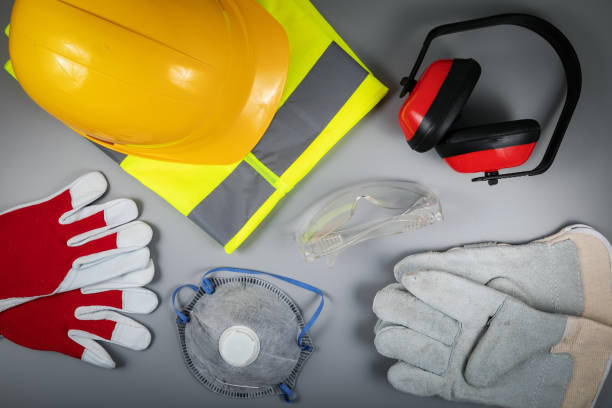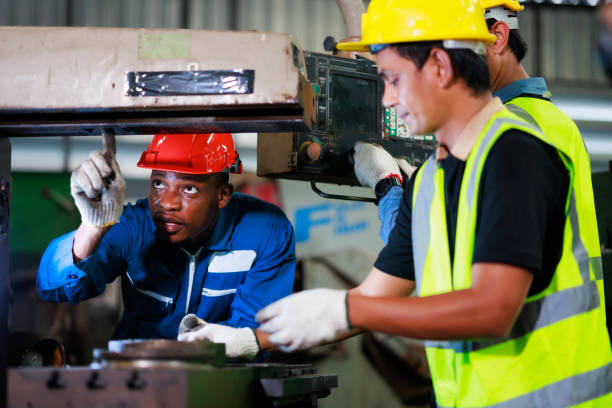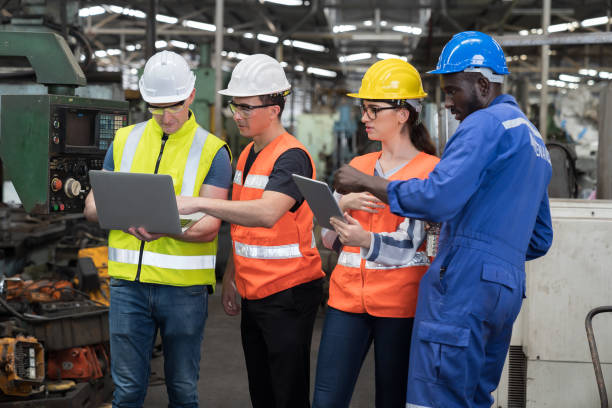Personal Protective Equipment(PPE), is equipment worn or otherwise used to protect a person from hazards to their safety or health. According to the Occupational Safety and Health Administration (OSHA), PPE is equipment worn to minimize exposure to hazards that lead to serious occupational injuries and illnesses.
Personal protective equipment (PPE) is clothing or equipment that workers use to protect them from workplace safety hazards. PPE usually includes safety helmets, safety glasses, welding helmets, earplugs or ear muffs, protective face shields, safety gloves, safety shoes, high-visibility clothing, safety harness and other protective items. It is important to use PPE when working in places where there is a risk of injury or where hazardous materials are present.
There are many types of PPE, including safety helmets, safety glasses, earplugs or earmuffs, face masks, safety gloves, safety shoes, and high-visibility clothing. Different types of PPE have different functions and uses. Only by selecting the appropriate type of PPE according to the needs of the work can the best protection be achieved.

Safety Helmet
Safety helmets can provide workers with head protection to prevent injuries caused by falling objects, splashes or safety accidents hitting the head. Safety helmets come in a variety of styles and sizes, with options depending on the industry.
Safety Glasses
Safety glasses can provide eye protection for workers. Wear safety glasses to protect your eyes from dangerous objects such as dust, debris, dirt, and splashes in the air that can cause damage to your eyes. At the same time, it can also avoid the radiation influence of light such as ultraviolet rays.
Earplugs or Earmuffs
Earplugs and earmuffs provide workers with hearing protection. On construction sites or places where large equipment is operating, there is usually severe noise. Working in such an environment for a long time will cause serious hearing damage to workers. Wearing earplugs or earmuffs can minimize the risk of noise-induced hearing loss and prevent unnecessary hearing damage.
Face Mask
Masks provide respiratory protection for workers. Dust masks prevent the inhalation of substances such as dust and Anti-poison respirator filter harmful substances, they protect the wearer from all particles and harmful substances that may be inhaled and protect the wearer from adverse health effects.
Safety Gloves
Safety gloves provide hand protection for workers. Workers use their hands all the time at work, and when handling or using items that are irritating to the skin or sharp tools, their hands are very vulnerable to injury. Always wear safety gloves to protect your hands from injury.
Safety Shoes
Safety shoes provide foot protection for workers. When there are sharp objects or heavy machinery moving in the working environment, the feet may be pierced or crushed. If the ground is slippery, you may fall and get injured. Wear suitable safety shoes to protect feet from injury.
High Visibility Clothing
High-visibility clothing provides physical protection for workers. In an environment with low visibility, it is very easy to cause safety accidents due to inattention. Wearing high-visibility safety clothing makes it easier for people to notice workers, thereby reducing or avoiding accidents.
Safety issues are always a big concern in the workplace, and wearing personal protective equipment can help prevent safety accidents from happening. Choose appropriate equipment according to the working environment of different industries to protect workers from injury. For example, if you work on a construction site, you need to wear head protection and hearing protection to protect against falling objects and noise. If you are handling chemicals in a laboratory, you need eye protection as well as hand protection to prevent splashes of chemicals from entering the eyes and damaging the skin. At the same time, wearing personal protective equipment can also make you as comfortable as possible while working. Wearing the correct and appropriate PPE ensures job safety and increases productivity.

PPE is the last line of defense against safety incidents in the workplace, and wearing the correct and appropriate PPE can protect workers from major injuries. You must use PPE to protect yourself when there is no other way for you to avoid the risk of possible injury on the job.
Employers should provide employees with personal protective equipment free of charge.
The Personal Protective Equipment at Work Regulations state that employers should provide employees with appropriate personal protective equipment (PPE) and train them in its use when there are health and safety risks that cannot be adequately controlled by other means.
The Health and Safety at Work Act states that workers cannot be charged for PPE that is only used at work.
If proper PPE is not provided to employees, then employees may be injured as a result of not being properly protected while working. This may bring a serious decline in the company's economic benefits and be punished by relevant departments. Provide employees with appropriate personal protective equipment to ensure the safety of employees at work, and to avoid a series of impacts on the company and workplace operations caused by employee accidents.
I believe that by reading the previous content, you have already had a certain understanding of personal protective equipment (PPE), and realized the importance of wearing PPE in the workplace. But is it okay to just choose to use PPE? The answer is of course no. Optimal protection is not only about choosing the right type of PPE, but also choosing to wear the right PPE.

Selecting the right PPE should consider the following factors:
1. Workplace Hazards
There are many kinds of personal protective equipment (PPE) that can be used in the market. To choose the best PPE, you need to conduct a risk assessment of the workplace. Only by understanding the dangers and risk levels in the workplace can you choose PPE in a targeted manner Determine the best safety and protective equipment for your workplace.
2. Fit
Wearing personal protective equipment is to provide effective protection at work, but not to reduce work efficiency by wearing PPE at work. When choosing PPE, you should ensure a good fit and a full range of motion.
3. Weight
Weight is also an important factor to consider when choosing PPE. You can imagine how painful it would be to wear heavy PPE to work. Heavy PPE will not only affect your range of motion, affect work progress, but also put you at risk of work fatigue. Choosing PPE with a lighter weight will solve the above problems well, but it should be noted that the equipment must be of good quality and durable.
4. Comfortable
Discomfort may be one of the reasons why employees do not like to use PPE. Wearing uncomfortable PPE not only cannot provide positive protection for workers at work, but it is also likely to cause employees to lose concentration and cause injuries. In summer, choose breathable, ventilated, sweat-absorbing and moisture-wicking equipment; in winter, choose thick and warm equipment. Comfort is paramount.
5. Quality and Design
Make sure the PPE you buy for your workplace is made from high-quality materials and designed safely. Only when the quality of PPE is guaranteed can the safety and protection of workers be provided.
Faced with all kinds of PPE equipment, we may be dazzled to choose, and the prices of different types of PPE suitable for different industries are also very different. When purchasing equipment, it is important to select the appropriate PPE equipment for your individual situation. Investing in safety is the wisest choice.
Copyright © Hebei Sinotools Industrial Co.,Ltd. All Rights Reserved | Powered by  Sitemap
Sitemap